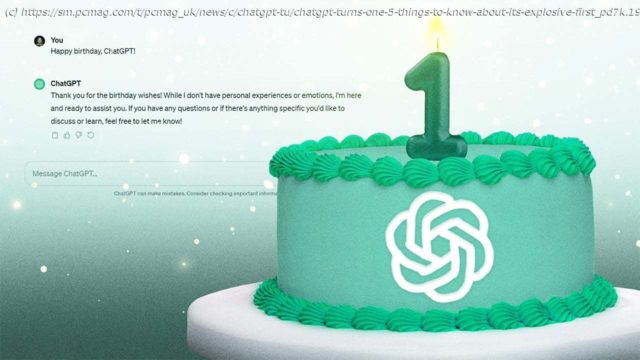Since its release on Nov. 30, 2022, OpenAI’s ChatGPT has turned the tech industry upside down. Here are the main takeaways from its turbulent start to prepare you for the road ahead.
What happens when an unexpectedly powerful technology becomes an overnight sensation, quickly making its way into schools, businesses, and the dark corners of the web, with few laws or social norms to guide it? It’s the story of ChatGPT, which has now been answering our questions (with a few hallucinations along the way) for a year.
OpenAI’s chatbot has dominated tech headlines since its Nov. 30, 2022, debut. Two months in, it was the fastest growing app of all time, lighting a fire under dozens of competitors and catching the eyes of investors, regulators, and copyright holders alike.
Its impact was on full display earlier this month after the shock dismissal of Sam Altman. Tech CEOs come and go, but OpenAI had become a big enough player for Microsoft CEO Satya Nadella to get involved and for OpenAI employees to threaten mass resignations unless Altman returned. He was quickly reinstated.
Meanwhile, ChatGPT entered the zeitgeist. “I asked ChatGPT to help me write this” became the joke of the year for public speeches, for better or worse.
Whether you’ve been following ChatGPT’s every twist and turn or are wondering if it’s time to try it out, here’s what to know about the chatbot’s explosive first year and what to expect in 2024.1. ChatGPT Does Not ‘Understand’ Things
Much of 2023 was spent testing ChatGPT to see what it can do, and initially, its comprehensive answers surprised us all. How does it know that? As it turns out, it doesn’t…really.
When you ask ChatGPT a question, it sifts through troves of training data, plus previous conversations with other users, to identify patterns and figure out what words you most likely want to see. Large language models (LLMs) assign a score to each word in the sentence, based on the probability that they are correct, as the New York Times explains. ChatGPT’s image-reading capability follows the same principle.
This approach to language uses a framework created by the late Claude Shannon, a computer scientist dubbed the “father of information theory.” Shannon divided language into two parts—syntax (its structure) and semantics (its content, or meaning). ChatGPT operates purely on syntax, using math, plus user feedback, to avoid knowing the semantics.
Sometimes it fails, leading to so-called “hallucinations,” or nonsensical responses. That happens when the model “perceives patterns or objects that are nonexistent or imperceptible to human observers,” IBM says. Still, for a first-gen product, ChatGPT works incredibly well.
Home
United States
USA — software ChatGPT Turns One: 5 Things to Know About Its Explosive First Year






